
Frequent flyers are often looking for strategies to maximise their airline status, while minimising the cost of acquiring that status.
In most frequent flyer programs, there are lots of tricks you can use to attain status without overspending on flights. For example, you could use double status credit offers to earn twice as many status credits on your flights.
You could also look for the kinds of routings and fare types that make good “status runs” because you’ll earn lots of status credits for relatively little spend. The old adage of “why flight direct when you can connect” often applies here, as connecting flights typically gain you more status credits.
In addition, if you already have status with one airline, shortcuts like status matches and challenges can fast-track you to elite status with another airline. One example of this is the Qantas Tier Accelerator challenge.
In fact, even if you don’t already have status with any airline, you can get a shortcut to Star Alliance Gold status by simply taking out a HSBC Star Alliance credit card.
Get Star Alliance Gold status without flying…
- Card Name
- HSBC Star Alliance Credit Card
- Earn
- 1
- Signup Bonus
-
Fast Track to Star Alliance Gold Status
- Annual Fee
- $0 in the first year, $499 p.a. thereafter
- Read more
- View Offer
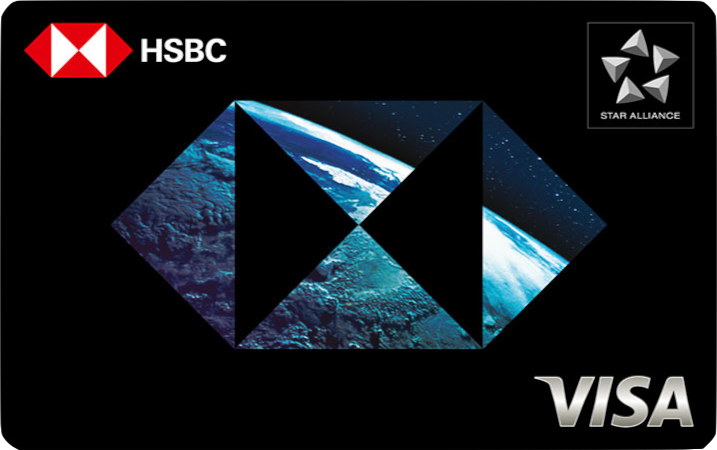
on everyday purchases
There’s another little-known airline status strategy that I think is worth talking about in this article. It has its downsides, but it could also save you quite a bit of money if you’re not otherwise flying enough to earn a higher status tier with your preferred airline every single year.
Contents
The cost of attaining and retaining status
With the Qantas Frequent Flyer and Virgin Australia Velocity programs, your status tier is based on the amount of status credits you earn over a 12-month period.
Let’s say, hypothetically, that you earn an average of one Qantas status credit for every $15 spent with Qantas and its Oneworld partner airlines.
Of course, in reality, you won’t always earn at this rate. With Qantas, your status credit earn is based on the route and type of ticket you fly on.
In some cases, you’ll earn at a lower rate – like if you earn 20 status credits on a $681 Economy Flex ticket from Melbourne to Sydney, giving a return of 1 status credit per $34 spent. In other cases, you might earn at a higher rate – for example, you might get the cost down to under $4 per status credit by booking a status run during a Double Status Credits promotion.
But to keep our explanation simple, let’s just assume you earn an average of 1 status credit per $15. Bear with me on that.

With Velocity Frequent Flyer, you also currently earn status credits based on the distance you fly and fare type you booked. But Velocity will move to a new system of awarding 1 status credit per $12 spent on most Virgin Australia tickets in 2025, tying your status directly to your spend.
Let’s use Qantas Platinum as an example…
For now, let’s stick to Qantas Frequent Flyer for this example.
To earn Qantas Platinum status, you’d need to attain 1,400 status credits within a year. If we assume you earn 1 status credit per $15 spent on flights, this means you’d need to spend around $21,000 during your Qantas Frequent Flyer membership year.
As soon as you upgrade to Qantas Platinum status, you’ll get to enjoy your benefits for the rest of your current membership year, plus all of your next membership year.
To retain your Qantas Platinum for a further 12 months beyond that, you’d then need to earn another 1,200 status credits during your next membership year. That would mean spending another $18,000 on flights, under our hypothetical model. And the same again the next year, to renew Platinum for a further 12 months…
Different requirements to earn and retain status
Qantas and Velocity both make it easier to retain your current tier than to upgrade to a higher one – with the exception of their very top tiers. This is a clever way of disincentivising status downgrades.
Qantas status requirements
These are the amounts of Qantas status credits you’d need to earn or renew Qantas Frequent Flyer status (you also need 4 eligible sectors):
| Qantas tier | Status credits to earn | Status credits to renew |
|---|---|---|
| Silver | 300 | 250 |
| Gold | 700 | 600 |
| Platinum | 1,400 | 1,200 |
| Platinum One | 3,600 | 3,600 |
Velocity status requirements
These are the amounts of status credits you’d need to earn with Velocity Frequent Flyer to earn or retain Virgin Australia status:
| Velocity tier | Status credits to earn | Status credits to renew |
|---|---|---|
| Silver | 250 | 200 |
| Gold | 500 | 400 |
| Platinum | 1,000 | 800 |
| Platinum Plus (launching 1 October 2025) | 2,000 | 2,000 |
Soft landings
If you don’t fly enough during your next membership year to retain your elevated status level, the airline won’t necessarily downgrade you all the way back to the base tier in the following year. Both Qantas and Velocity use “soft landings”, only downgrading members by one status tier at a time.
For example, if you are a Velocity Gold member and don’t earn any status credits at all before your next review date, you’ll only drop down to Velocity Silver for the next 12 months. You won’t drop all the way back to Red straight away.
(With Qantas Frequent Flyer, you might also have the option to “buy” a status extension with your Qantas points. The going rate is currently 80,000 points to renew Gold status or 120,000 points to renew Platinum, but you may need to have earned at least half of the required status credits during your current membership year to be eligible for this offer.)
The strategy of upgrading your airline status every second year
If you want to ensure that your status tier never gets downgraded, and you haven’t yet earned lifetime status, you would need to earn enough status credits to renew your tier every 12 months.
Using our previous assumptions, that potentially means spending $18,000 every single year to retain Qantas Platinum status. In other words, you’d be spending $36,000 over a two-year period.

Now, consider an alternative scenario. For simplicity, we’ll assume that your Qantas Frequent Flyer membership year starts in January and ends in December…
Say, for example, that you earned 1,400 Qantas status credits at the start of 2025 and upgraded to Qantas Platinum status. You’d get to keep your benefits until December 2026.
In 2026, you don’t worry about earning status credits and do most of your flying on Classic Reward tickets. At the end of December 2026, your status will drop to Gold.
Then, in January 2027, you do a bunch of flying on Qantas again and earn another 1,400 status credits. Your status will then get upgraded back to Platinum until December 2028.
Under this model, you might only be spending around $21,000 every two years, rather than $36,000. So, you spend a lot less, but you still hold status for most of those two years.
If you became a Qantas Points Club Plus member during 2027, you could also get a status credit rollover that gives you a head-start of 100 status credits in 2028. So, not all of the status credits you might earn in 2027 would go to waste.
This strategy has an obvious downside
The downside, in this example, is that your status will drop to Gold in January 2027. This means you won’t get to enjoy benefits like First Lounge access when completing your January 2027 flights.
That may not be such a problem at airports like Auckland, where Qantas’ First and Business Lounges are basically the same…

But if you’re flying internationally out of Sydney, having to walk past the Qantas First Lounge as you make your way to the Business Lounge might not be the most fun experience. 😂

You do get your Platinum benefits back, though, once you’ve flown the required 1,400 status credits in your new membership year.
While I’ve mainly talked about Qantas status in this article, this strategy could also work for most other airline frequent flyer programs. It could even work for hotel loyalty programs as well. It’s definitely not for everyone, but it could make sense in some situations.
Have you used this two-year status strategy, and if not, would you consider it? Let us know on the AFF forum!
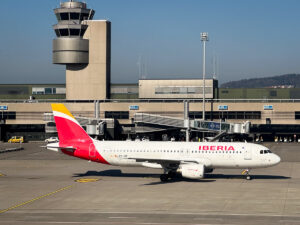
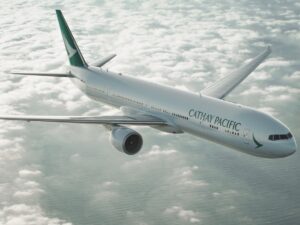

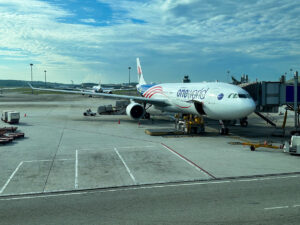
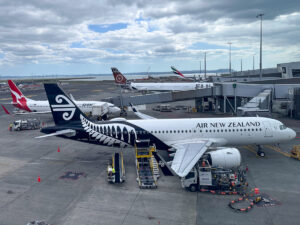


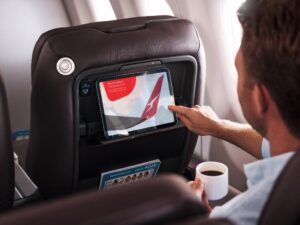
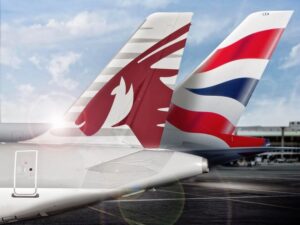



















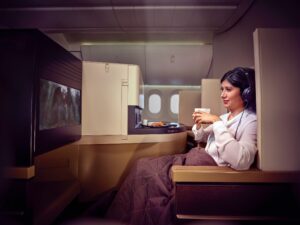







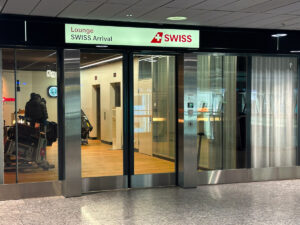
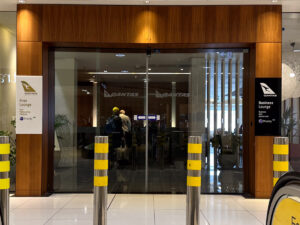











































Community Comments
Loading new replies...
Join the full discussion at the Australian Frequent Flyer →